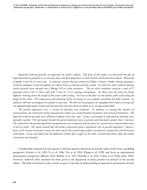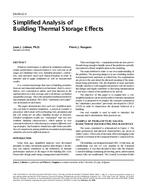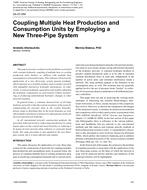The responses of 50 subjects wearing winter clothing (0°86 clo) to two-hour-long exposures various kinds of winter indoor conditions were studied. The conditions included air speeds between 0.05 and 0.5 m/s (10 and 100 fpm) and asymmetric radiation to a cold wall that produced radiant temperature asymmetries ranging from 0 to 20 K (0 to 36 F). The study was done at neutral or preferred temperatures and at conditions 3°C (5.4 F) lower. Some of the conclusions are: (i) The low mean radiant temperatures from the cold wall were compensated for by increased air temperature through the operative temperature concept. (2) The preferred operative temperature increased with air speed. (3) The level of occupant thermal acceptability at preferred temperatures was unaffected by air speeds of 0.25 m/s (50 fpm)less or radiant asymmetries of 10 K (18 F) or less. (4) At air velocities greater than m/s (50 fpm) the operative temperature determination procedure used seemed to overestimate radiation and underestimate convection. (5) Operative temperatures 3°C (5.4 F) less than preferred temperature are probably too low for sedentary occupancy as acceptability levels were only about 60% in these tests and at air speeds greater than 0.15 m/s (30 fpm) the subjects did not reach equilibrium. That is, acceptability and comfort decreased with time.
Units: Dual
Citation: ASHRAE Transactions, 1987, vol. 93, pt. 1, New York, NY
Product Details
- Published:
- 1987
- Number of Pages:
- 15
- File Size:
- 1 file , 1.5 MB
- Product Code(s):
- D-NY-87-3047


